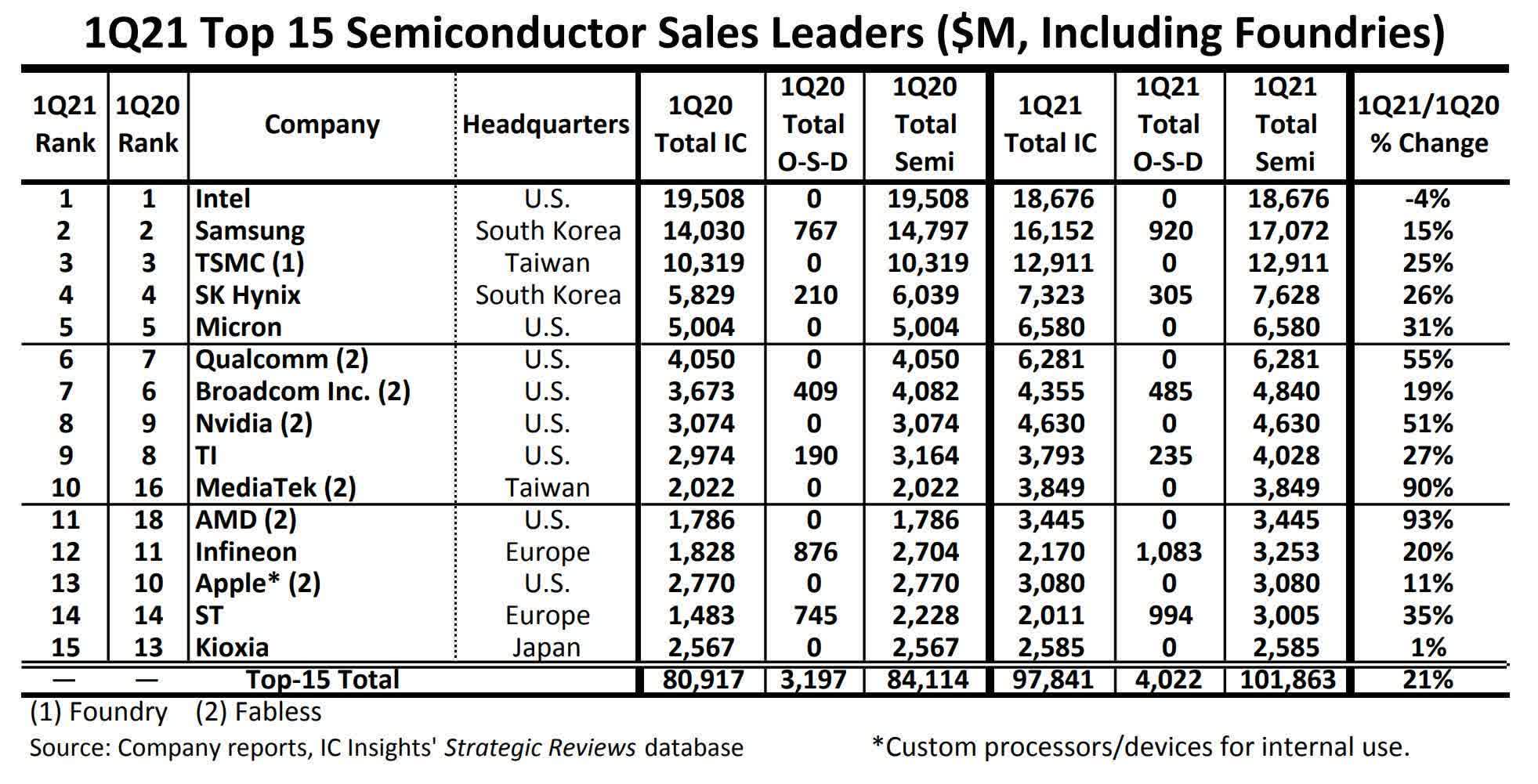In brief: Despite increased competition from the likes of AMD and Apple, Intel remains the world’s number one semiconductor company in terms of revenue. Chipzilla was the only name in the top 15 that saw a year-over-year decline (-4%), but its $18.676 billion sales figure was still over two billion dollars more than what second-place Samsung managed.

IC Insights’ report on the semiconductor industry’s first-quarter of 2021 shows that the top 15 firms' sales were up 21% year-on-year; were it not for Intel’s decline, that figure would have been 29%. The thirteen companies sitting behind team blue all saw double-digit YoY increases, whereas Intel dropped from $19.5 billion in Q1 2020 to $18.676 billion in Q1 2021. The unprecedented demand for electronic consumer goods is reflected in the market’s yearly rise.
Lying in second place is Samsung. The Korean giant saw its sales rise 15% to $16.152 billion, while TSMC took the third position with a 25% jump to $12.911 billion.
The company with the largest yearly increase, and a new entry in the top 15, is AMD. Its $3.445 billion in sales marks a 93% YoY rise, securing Lisa Su’s firm the 11th position—seven places higher than its Q1 2020 ranking. AMD has been challenging Intel since the launch of its first Ryzen CPUs, though Su warned there’s still more work to do. The CEO recently said the company would be prioritizing its high-end processors over budget offerings in light of the chip shortage.
IC Insights notes that the list includes eight suppliers headquartered in the U.S., two each in South Korea, Taiwan, and Europe, and one in Japan. There are six fabless companies—Qualcomm, Broadcom, Nvidia, MediaTek, AMD, and Apple—while TSMC is the sole pure-play foundry.
https://www.techspot.com/news/89825-intel-world-top-semiconductor-company-amd-climbs-11th.html
